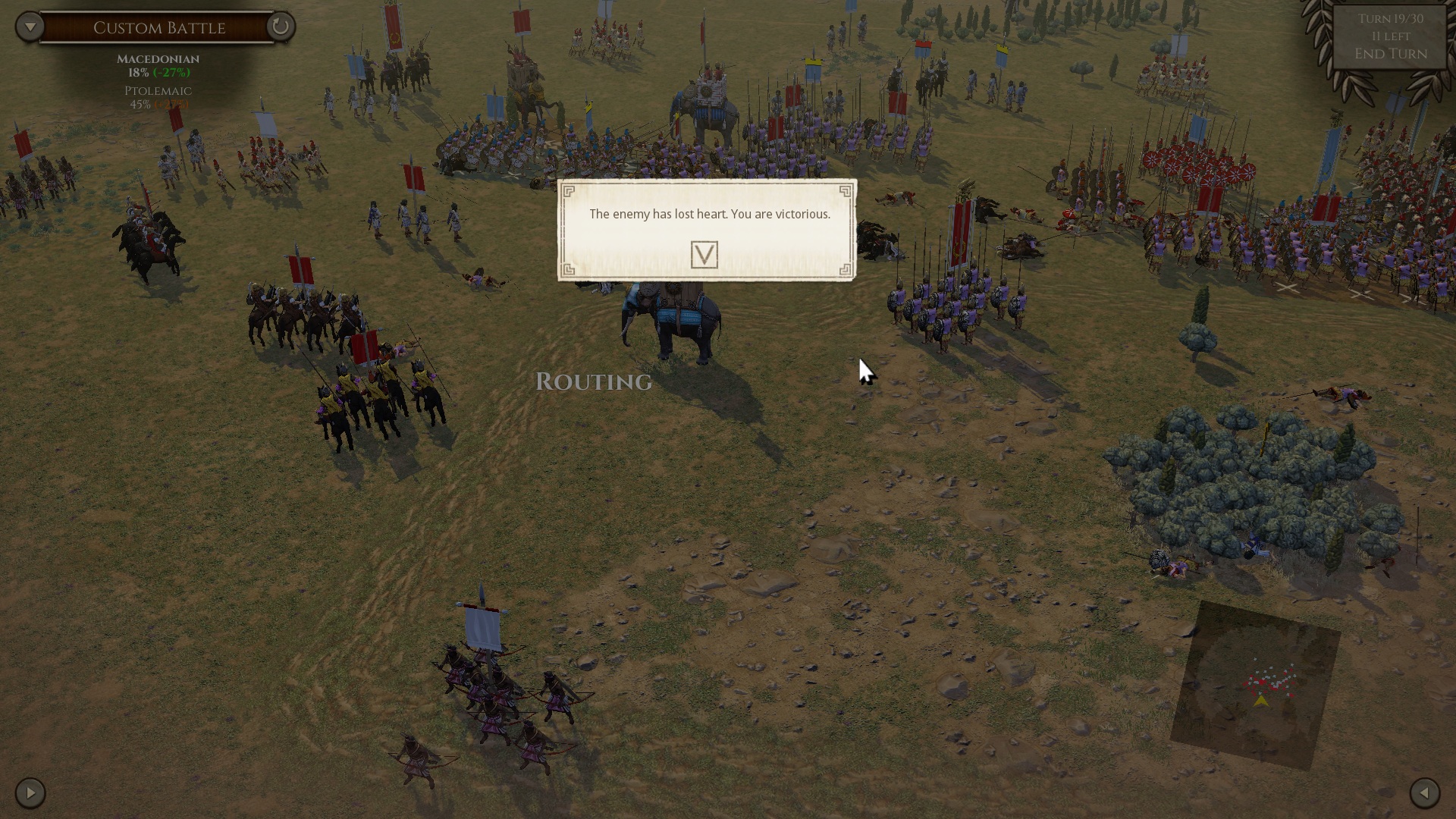The Battle of the Bald Knoll
The Forgotten Battle Near Maroneia
Had the appointed chronicler Dicaeus not met his end beneath the panicked feet of his own elephant corps—trampled into anonymity amid the prelude to battle—this thunderous clash between Cassander and the defiant Arhidaois might have earned eternal renown in the scrolls of antiquity. Separated from Ptolemy and grasping at sovereign glory, Arhidaois brought his splintered expeditionary force down from the Bithynian heights, only to collide with destiny—and Cassander's ambition—just north of mist-veiled Maroneia.
The dawn was a shroud of fog, thick and suffocating, blanketing the broken terrain that separated two sun-parched plains. Visibility was minimal; strategy yielded to instinct. Makedónes met Makedónes in a tempest of steel atop a barren knoll—an ugly, bald rise pockmarked by a withered clutch of diseased trees, like nature's own omen. Here, in a frenzied melee bereft of formation, confusion reigned. Yet the chaos would become Cassander’s crucible.
With desperate urgency, Cassander drove his weary phalanxes on a forced march toward that central height, seeing in its modest elevation a keystone of tactical leverage. The knoll, while unremarkable to the eye, afforded a decisive perch—defensible and commanding. His left flank lay anchored by a somber, opaque lake—later etched into memory and maps as Λίμνη Αίματος (Límni Aímatos, or “Blood Lake”)—and his right obscured by two dense, generous forests that funneled any approach into predictable lanes. This choice of terrain, audacious and blind, paid immediate dividends.
From the north, Arhidaois’s forces descended in haste, deceived by a brilliant feint: Cassander had drawn them wide with the illusion of an exposed flank, only to concentrate his core for a brutal central thrust. What followed was a brutal and brilliant interior flanking engagement. As Arhidaois's left surged toward what they thought was Cassander’s soft underbelly, they were enveloped from both sides. Cassander’s right folded inward, crushing the Ptolemaic flank in a textbook pincer. Two flanks, one real and one illusory, both turned to scythes.
Securing the knoll early granted Cassander a sloping advantage: his pikes surged downhill with momentum, hacking through the disoriented vanguard of Arhidaois like waves of iron teeth. It was the first of several masterstrokes in a battle otherwise choked with smoke, mud, and noise. The sheer confusion—lack of formed lines, the claustrophobic quarters, the eerie silence broken only by cries and steel—made the melee seem less like a battle and more like a fever dream.
Edmondas, the ever-cunning advisor to Arhidaois, strained to restore order amid the collapse. He darted across the field, rallying shattered lines, extinguishing crisis after crisis with the composure of a veteran. Yet there were too many fires, too few buckets.
Then came the final blow. Cassander’s elephants, long criticized for their insatiable hunger and sluggish pace, found their moment of reckoning. The blood-dark lake, while hindering movement, inadvertently compressed the Ptolemaic flanking force, making them ripe for trampling. Cassander’s war-beasts, unleashed with surgical brutality, shattered what remained of Arhidaois's cohesion. Their howls echoed across the valley, sealing the fate of the day.
In retrospect, it was terrain that won the battle: terrain claimed early, exploited cunningly, and used mercilessly. Cassander had turned nature itself into a weapon.

- Edmund Dantes.jpg (815.32 KiB) Viewed 5013 times
Final Salute
All laurels to Edmund Dantes for a splendid game. His gallant orchestration of a beleaguered and ambushed force under Arhidaois nearly wrestled victory from the jaws of defeat. Yet the breakthrough of Cassander’s elephants on the blood-slicked flank proved decisive, rolling back resistance like parchment before a storm.
45-18 to Cassander



